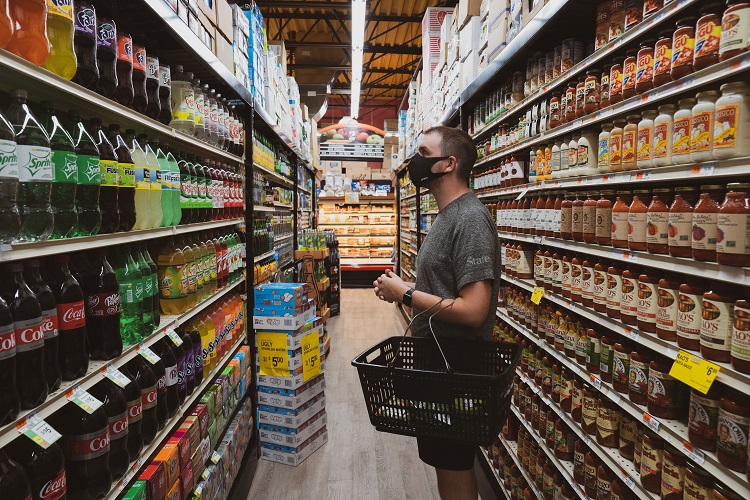2020 will undoubtedly go down in history as the year of the COVID-19 pandemic. As we near the end of this tumultuous year, the novel coronavirus continues to upend lives, given the fluctuations and inconsistencies in case incidences, regulations, and official guidance.
Since early March, fluctuations in COVID-19 cases have kept consumers across the U.S. in a state of uncertainty as fear of exposure to the virus has ebbed and flowed according to progress (or lack thereof) toward “flattening the curve.” Now, with COVID-19 infections on the rise once again here in the U.S., and reported globally, consumers are even less confident in the possibility of a COVID-19-free future.
Since the onset of the pandemic, here at The Hartman Group, we’ve been observing and tracking how consumers have altered their meal planning, shopping and cooking behaviors as they learned to cope with, and adapt to, the realities of the ongoing COVID-19 health crisis.
While the surge in online ordering has been widely reported, our research reveals that food procurement strategies in the era of COVID-19 is a nuanced and complex narrative.
One part of the pandemic grocery shopping story is that there is such a diversity of strategies that shoppers have adopted, not just with where they shop, but what precautions they take to mitigate the spread of COVID-19. Each shopper and household make their own evaluation based on local levels of the coronavirus threat, their household’s needs and vulnerabilities, their own level of risk tolerance, and options available to them.
With the proliferation of shopping options beyond basic in-store trips and online orders — to include a range of direct-to-consumer and subscription models — consumers select among those approaches and adapt the frequency, location, and methods of shopping to suit their comfort level. One of the most common tactics is to strive to consolidate trips, though many continue to visit multiple stores on a given outing.
Our Food Sourcing in America July/August 2020 report finds that the impacts of the pandemic on shopper constraints and priorities is multifaceted, and different channels are positioned to meet consumers’ changing needs.
- First, all food retail channels gained in sales simply because consumers are shunning food service
- Supermarkets are better positioned than many other channels to capture occasions that would otherwise go to foodservice, but especially those (like natural specialty) known for higher quality fresh-prepared
- Mass has been in a better position to meet needs shifting online, when shoppers don’t want to visit a store at all
- Discount and dollar are clearly better positioned to meet needs of shoppers facing financial challenges (or continuing to want to save and couldn’t bear delivery charges)
- Club is also well positioned for those who want to “stock up”
- And your local supermarket very often captures those “emergency” situations like grabbing things before a snowstorm, and the pandemic has brought those situations periodically to different localities
4 key takeaways: Shifts in contexts, shifts in food sourcing
The pandemic is affecting consumer lives on all levels, from decisions about menial daily tasks all the way up through their views on politics and social responsibility.
- Safety and protection from the virus are the top priority for consumers, and they are willing to make concessions around their other needs and values in order to protect themselves and their household. This baseline need for safety is an undercurrent running through all of the decisions that a consumer makes, shaping new habits, attitudes, and behaviors.
- Sourcing food for the household is associated with specific COVID-19-related risks, as this is an essential, unavoidable activity. Consumers are therefore constantly assessing and adjusting their food sourcing practices in response to continually shifting information about the virus, its spread, and the precautions that should be taken.
- Given the constant stressors created by living through a pandemic that has disrupted nearly every aspect of life for months on end, consumers turn to what is familiar to provide a sense of comfort and security. This comfort can be derived from an increased reliance on trusted products, brands, and retailers, the indulgence of nostalgic desires for well-loved products and experiences, or a drive to gain a sense of control over those aspects of life still within a consumer’s individual power.
- Consumers are craving both comfort and familiarity as well as discovery. The stressors and deprivations of life during a pandemic make these emotional needs particularly acute. As food has a distinct ability to affect such emotions, manufacturers and retailers of food and beverage have opportunities to connect with consumers using these pathways.
As CEO of The Hartman Group, Demeritt drives the vision, strategy, operations and results-oriented culture for the company’s associates as The Hartman Group furthers its offerings of tactical thinking, consumer and market intelligence, cultural competency and innovative intellectual capital to a global marketplace.
Related stories:
- The state of sustainable seafood
- What’s trending for the future of food?
- Things we miss: New interests, changing values amidst the pandemic
________________________________________________
If you enjoyed this article, you can sign up for the FMI dailyLead, ProChef SmartBrief or Restaurant SmartBrief to get news like this in your inbox. For even more great news content, sign up for any of SmartBrief’s 275+ free email newsletters today, free.
